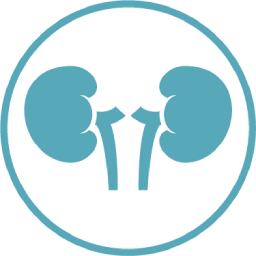Association of miRNAs with
Other Disease
what is
Other Disease?

…
Association of miRNAs with Other Disease
Project.1 Natural products have been of much interest in research studies owing to their wide pharmacological applications, chemical diversity, low side effects, and multitarget activities. The anti-carcinogenic effects of these products are partly mediated through modulation of miR-21 expression. To date, numerous downstream targets of miR-21 have been recognized, which include phosphatase and tensin homolog (PTEN), ras homolog gene family member B (RHOB), phosphoinositide 3-kinase/protein kinase B (PI3K/Akt), programmed cell death 4 (PDCD4), signal transducer and activator of transcription (STAT)-3, and nuclear factor kappa B (NF-κB) pathways. These signaling pathways, their regulation by oncomiR-21 in cancer, and the modulating impact of natural products are the main focus of this review.
Regulation of microRNA-21 expression by natural products in cancer. Shakeri A, Ghanbari M, Tasbandi A, Sahebkar A.
Phytother Res. 2021 Jul;35(7):3732-3746. doi: 10.1002/ptr.7069.
Project.2 In this review, we discuss current knowledge of miRNAs regulatory role in cell cycle progression of stem cells. We describe how specific miRNAs may control cell cycle associated molecules and checkpoints in embryonic, somatic and cancer stem cells. We further outline how these miRNAs could be regulated to influence cell cycle progression in stem cells as a potential clinical application.
Cell Cycle Regulation of Stem Cells by MicroRNAs. Mens MMJ, Ghanbari M. Stem Cell Rev Rep. 2018 Jun;14(3):309-322. doi: 10.1007/s12015-018-9808-y.
Project.3 Mounting evidence underscores the dysregulation of miRNAs to be associated with cancer. However, their potential as biomarkers for early diagnosis of different cancers remains incompletely unraveled. This project explored the relationship between plasma miRNAs and cancer within the population-based Rotterdam Study cohort. Plasma samples were collected at baseline (2002 and 2005) and miRNA levels were measured in 1,999 participants, including 169 prevalent cancer cases. The occurrence of cancer was assessed by continuous monitoring of medical records in 1,830 cancer-free participants until January 1, 2015. We assessed the association between incidence of five common cancers (blood, lung, breast, prostate, and colorectal) and 591 miRNAs well-expressed in plasma, using adjusted Cox proportional-hazards regression models. Our longitudinal analysis identified 13 miRNAs significantly associated with incident hematologic tumors surpassing the Bonferroni-corrected P < 8.46 × 10- 5, 12 of them (miR-6124, miR-6778-5p, miR-5196, miR-654-5p, miR-4478, miR-4430, miR-4534, miR-1915-3p, miR-4644, miR-4292, miR-7111-5p, and miR-6870-5p) were also associated with prevalent hematologic tumors in the cross-sectional analysis at the baseline. In-silico analyses of the putative target genes of 13 identified miRNAs highlighted relevant genes and pathways linked to hematologic tumors. While no significant miRNA association was found for other four studied cancers, two miRNAs (miR-3157-5p and miR-3912-5p) showed nominal association with incident of three different cancer types.
Dysregulation of plasma circulating microRNAs in all-cause and cause-specific cancers: the Rotterdam Study. Shuai Y, Zhang X, Lavrijssen BDA, Ikram MA, Ruiter R, Stricker B, Ghanbari M. Biomark Res. 2024 Aug 13;12(1):83. doi: 10.1186/s40364-024-00626-5.
Project.1 Circulating levels of 2083 miRNAs were measured by RNA-sequencing in plasma samples of 1999 participants from the Rotterdam Study collected between 2002 and 2005. Full blood count measurements were performed for absolute granulocyte, platelet, lymphocyte, monocyte, white and red blood cell counts. Multivariate analyses were performed to test the association of miRNAs with blood cell compositions and immune markers. First, principal component regression analysis showed that plasma levels of circulating miRNAs were significantly associated with red blood cell, granulocyte, and lymphocyte counts. Second, cross-sectional analysis identified 210 miRNAs significantly associated with neutrophil-to-lymphocyte ratio (NLR), platelet-to-lymphocyte ratio (PLR), and systemic immune-inflammation index. Further genetic look-ups showed that target genes of 7 identified miRNAs (miR-1233-3p, miR-149-3p, miR-150-5p, miR-342-3p, miR-34b-3p, miR-4644, and miR-7106-5p) were also previously linked to NLR and PLR markers. Collectively, our study suggests several circulating miRNAs that regulate the innate and adaptive immune systems, providing insight into the pathogenesis of miRNAs in immune-related diseases and paving the way for future clinical applications.
Plasma circulating microRNAs associated with blood-based immune markers: a population-based study. Clin Exp Immunol. 2023 Nov 9:uxad126. doi: 10.1093/cei/uxad126.
Project.1 We used genotyping and hospital records data in the UK Biobank (N = 423,419) to investigate associations between 346 genetic variants in miRNA-related sequences and a wide range of clinical diagnoses through phenome-wide association studies. Further, we tested whether changes in blood miRNA expression levels could affect disease risk through colocalisation and Mendelian randomisation analysis. We identified 122 associations for 6 variants in the seed region of miRNAs, 9 variants in the mature region of miRNAs, and 27 variants in the precursor miRNAs. These included associations with hypertension, dyslipidaemia, immune-related disorders, and others. Nineteen miRNAs were associated with multiple diagnoses, with six of them associated with multiple disease categories. The strongest association was reported between rs4285314 in the precursor of miR-3135b and celiac disease risk (odds ratio (OR) per effect allele increase = 0.37). Colocalisation and Mendelian randomisation analysis highlighted potential causal role of miR-6891-3p in dyslipidaemia.
Phenome-wide association study on miRNA-related sequence variants: the UK Biobank. Mustafa R, Ghanbari M, Karhunen V, Evangelou M, Dehghan A. Hum Genomics. 2023 Nov 24;17(1):104. doi: 10.1186/s40246-023-00553-w.
Project.2 We collaborated in this project performing genome-wide association studies on plasma miRNAs (ex-miRNAs) in 3,743 Framingham Heart Study (FHS) participants which identified 1,027 cis-ex-miRNA-eQTLs (cis-exQTLs) for 37 ex-miRNAs, with 55% replication in the Rotterdam Study cohort. Colocalization analyses suggested potential genetic coregulation of ex-miRNAs with whole blood mRNAs. Mendelian randomization indicated 29 ex-miRNAs potentially influencing 35 traits. The chromosome 14q23 and 14q32 miRNA clusters emerged as the top signal, contributing over 50% of the significant cis-exQTL results, and were associated with a diverse range of traits including platelet count. Correlations of 10 ex-miRNAs (such as miR-376c-3p) in 14q32 with platelet count and volume were confirmed in FHS participants. These findings shed light on the genetic basis of ex-miRNA expression and their involvement in complex traits.
Expression quantitative trait locus mapping of extracellular microRNAs in human plasma. Huan T, Joehanes R, Rong J, Chen MH, Mustafa R, Dehghan A, Ghanbari M, Karlin H, Hwang SJ, Courchesne P, Larson MG, Johnson AD, Freedman JE, Levy D. iScience. 2024 Sep 18;27(10):110988. doi: 10.1016/j.isci.2024.110988.
Project.3 We present genome-wide association studies of 2,083 plasma circulating miRNAs in 2,178 participants of the Rotterdam Study to identify miRNA-expression quantitative trait loci (miR-eQTLs). We identify 3,292 associations between 1,289 SNPs and 63 miRNAs, of which 65% are replicated in two independent cohorts. We demonstrate that plasma miR-eQTLs co-localise with gene expression, protein, and metabolite-QTLs, which help in identifying miRNA-regulated pathways. We investigate consequences of alteration in circulating miRNA levels on a wide range of clinical conditions in phenome-wide association studies and Mendelian randomisation using the UK Biobank data (N=423,419), revealing the pleiotropic and causal effects of several miRNAs on various clinical conditions. In the Mendelian randomisation analysis, we find a protective causal effect of miR-1908-5p on the risk of benign colon neoplasm and show that this effect is independent of its host gene (FADS1). This study enriches our understanding of the genetic architecture of plasma miRNAs and explores the signatures of miRNAs across a wide range of clinical conditions. The integration of population-based genomics, other omics layers, and clinical data presents opportunities to unravel potential clinical significance of miRNAs and provides tools for novel miRNA-based therapeutic target discovery.
A comprehensive study of genetic regulation and disease associations of plasma circulatory microRNAs using population-level data. Mustafa R, …, Ghanbari M. Genome Biology 2024. DOI : 10.1186/s13059-024-03420-6.
Follow US
on These Social Media or Websites












